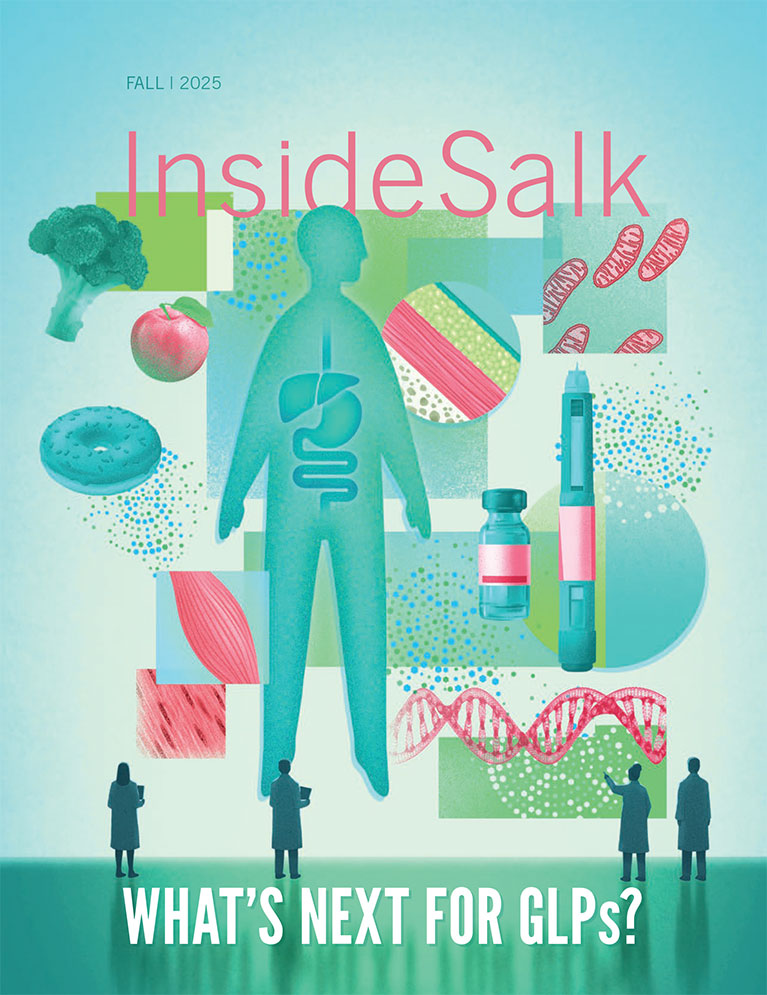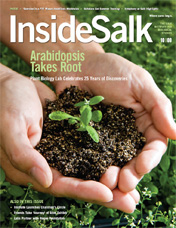If you’ve ever forgotten something mere seconds after it was at the forefront of your mind, then you know how important working memory is. Although it’s critical in our day-to-day lives, exactly how the brain manages working memory has been a mystery. Now, Professor Terrence Sejnowski and Salk and UC San Diego MD/PhD student Robert Kim have developed a new computational model showing how the brain maintains information short-term using specific types of neurons. Their findings could help show why working memory is impaired in a broad range of neuropsychiatric disorders, including schizophrenia, as well as in normal aging.
Read News ReleaseComputational Biology
Teaching artificial intelligence to adapt
Getting computers to “think” like humans is the holy grail of artificial intelligence, but human brains turn out to be tough acts to follow. Now, Professors Terrence Sejnowski and Kay Tye, along with first author Ben Tsuda and colleagues, have used a computational model of brain activity to simulate “adaptability” more accurately than ever before. The new model mimics how the brain’s prefrontal cortex uses a phenomenon known as “gating” to control the flow of information between different areas of neurons. The findings could inform the design of new artificial intelligence programs.
Read News ReleaseResearch catches up to world’s fastest growing plant
Wolffia, also known as duckweed, is the fastest-growing plant known, but the genetics underlying this strange little plant’s success have long been unknown to scientists. Now, a multi-investigator effort led by Todd Michael, research professor and first author of the paper, along with coauthor and Professor Joseph Ecker, reports new findings about the plant’s genome that explain how it is able to grow so fast. The research will help scientists to understand how plants put down roots and defend themselves from pests, with implications for developing plants that are optimized to increase carbon storage to help address climate change.
Read News ReleaseNew method could democratize deep learning-enhanced microscopy
Deep learning is a potential tool for scientists to glean more detail from low-resolution images in microscopy, but it’s often difficult to gather enough initial data to train computers in the process. A new method developed by Salk Assistant Research Professor Uri Manor, director of Salk’s Waitt Advance Biophotonics Core Facility, and first author Linjing Fang, Salk image analysis specialist, could make the technology more accessible by taking high-resolution images and artificially degrading them. The method could make it significantly easier for scientists to get detailed images of cells that have previously been difficult to observe, as well as allow scientists to capture high-resolution images even if they don’t have access to powerful microscopes.
Featured Stories
 The aging puzzle comes togetherAging is a complex puzzle, but by applying a collaborative, multidisciplinary approach, Salk scientists are putting its many pieces together.
The aging puzzle comes togetherAging is a complex puzzle, but by applying a collaborative, multidisciplinary approach, Salk scientists are putting its many pieces together. Dmitry Lyumkis – A passion for problem solvingAssistant Professor Dmitry Lyumkis discusses what he loves about data and the scientific process, and which places inspire him outside the lab.
Dmitry Lyumkis – A passion for problem solvingAssistant Professor Dmitry Lyumkis discusses what he loves about data and the scientific process, and which places inspire him outside the lab.
 Pamela Maher – Seeking treatments for Alzheimer’s diseaseFrom having a large garden to investigating compounds that plants make, Staff Scientist Pam Maher talks about how plants inspire her to find treatments for Alzheimer’s disease.
Pamela Maher – Seeking treatments for Alzheimer’s diseaseFrom having a large garden to investigating compounds that plants make, Staff Scientist Pam Maher talks about how plants inspire her to find treatments for Alzheimer’s disease. Rajasree Kalagiri – Bound to phosphohistidineRajasree Kalagiri shares the serendipitous steps along her journey of scientific discovery from southern India to Southern California.
Rajasree Kalagiri – Bound to phosphohistidineRajasree Kalagiri shares the serendipitous steps along her journey of scientific discovery from southern India to Southern California.





















































